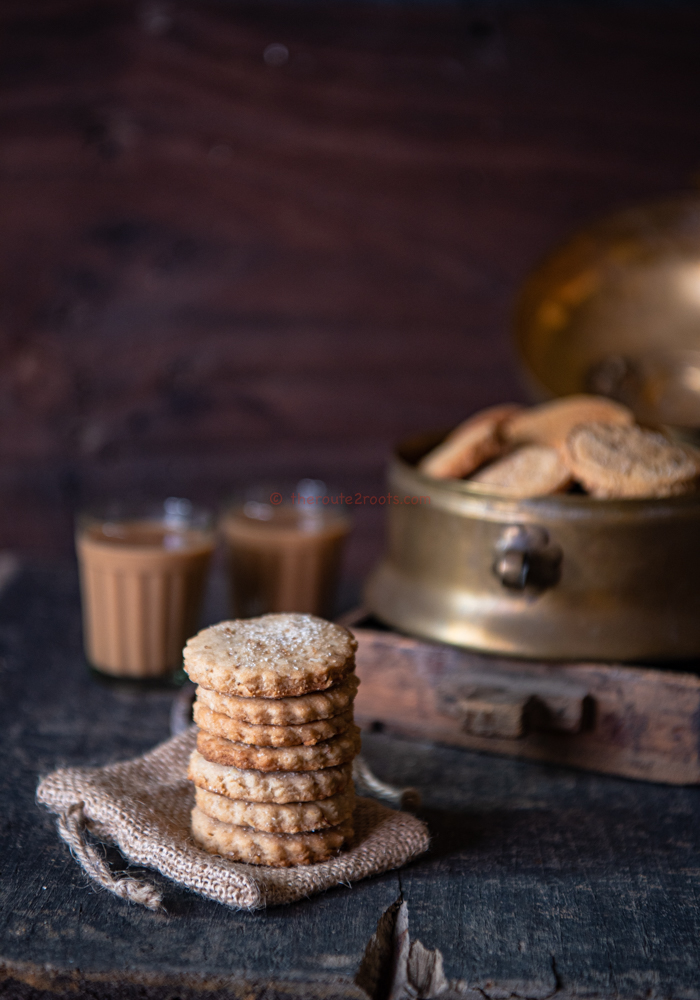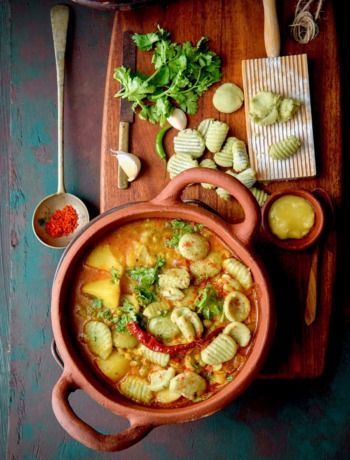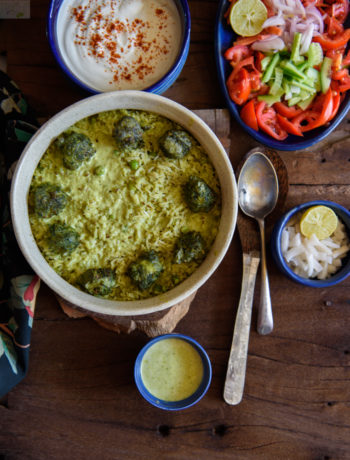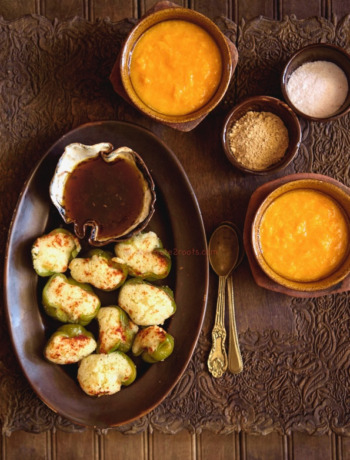One of the most rewarding aspects of my food blogging journey is the opportunity to be a part of a tribe that values foods of our heritage. The Instagram account for this blog has helped me connect with hundreds of individuals who are passionate not just about food but the traditional practices. Sheena Patel is one such individual I met through Instagram. Our interactions revolved around the value and pleasures of home-cooked Gujarati meals. Her Instagram account led me to her website, it was heartening to read about her approach and work on wellness through Yoga and sustainable food practices.
The post on Amrat Pak triggered some enriching conversations on the life of East African Gujaratis. Sheena had written, “Thank you for highlighting this dish. I’m a baby of East African Gujju parents. There are also many more dishes that have been created with the immersion of Ugandan ingredients and Gujju spices.” I decided to take this forward and we teamed up to talk about the food and life of Gujarati diaspora in East Africa before their expulsion from Uganda by Idi Amin.
The first recipe we share is Sheena’s Nanima Maniba na Chai Biscuits/Teatime Biscuits. Ba baked these biscuits over saghri/shighdi/ coal stove. The improvisation came by placing burning coal on the top as well. A far cry from today’s hi-tech digital home ovens. 96 years old Maniba is an inspiring lady with infectious energy. Sheena shares video snippets of her interactions with Ba, listen to the endearing conversation about the way of life in Uganda before 1970. Ba talks about how 2-3 of them would come together to make biscuits with 1 kg flour, how she substituted bottle gourd with semi ripe fresh off the tree papaya in the handvo she made, the fruit trees in their backyard in Uganda, now the kids would prefer the mogo/casava from the street vendor and not the one made at home….
As Sheena shares,
I’m Sheena Patel and I’ve been inspired by my Nanima’s way of life that has graced her with a permanent smile. My wellness company www.savsani.com is named after her maiden name and when translated into English it means ‘Bridge to Wellness’.
My Nanima has lived in four continents over the span of her ninety-six years (and counting) and raised eight kids blessed with an everlasting smile. Her journey from Kolki, in Gujarat’s Rajkot district to Mbale, Uganda started off as quiet an adventure at the young age of twenty. She left India on the vast ocean via sailboat as larger ships were not permitted for travel during the tail end of World War II. While sailing through the rough seas, my Nanima would share the unmistakable memory of physically having been held down while cooking over a shaking oversized vessel while tasting and tossing the masala in the dal. The journey of her life has been woven with such stories as this one. Back in India, there was a local Kandoi (cook) where she would buy special items, like freshly made jalebi during Navratri, for her Nani. Africa, unlike India, didn’t have a history of Indians before my grandparents arrived, so she had to learn to make everything she remembers and loved from her homeland, from scratch. Uganda, though many miles away from her roots, quickly became home. After many years, a vibrant Gujarati community was born and she would often exchange traditional Kathiawari recipes for staple Ahmedabadi recipes. One of these Ahmedabadi favorites was the Chai Na Biscuits. Every three months, she would buy a large kothri (bag) of flour to make these delightful biscuits. The true flavor of these biscuits would burst out from the organic macan (butter) and that textbook crispness that would form on the crust from the hot sagari (grill). When dipped in chai, it would be soft while effortlessly stay intact until touching the tip of your tongue. It is stories like these that carry a theme of true joy amongst a united foreign community all while resonating the charm of living down to each and every sip.
The biscuit recipe shared is from Sheena who made it in her her US kitchen . She shared the recipe and pictures for me to follow. I followed the recipe and made them in my Amdavadi kitchen (hence the nuances of working with cookie dough in warmer climatic conditions). Flavoured with warm spices and slightly mellow in sweetness, these were perfect partners to our morning and evening tea!!

Mani Ba's Chai Na Biscuits
Ingredients
- 1 cup butter, room temperature
- 1/2 to 3/4 cup caster sugar, adjust to suit you taste
- 3.5 cups all purpose flour/maida
- 1 teaspoon baking soda
- 1 teaspoon green cardamom and nutmeg powder
- little warm milk to bind, if the cookie dough requires
Instructions
In a large bowl sieve flour and baking soda.
In a mixing bowl, bring together butter and sugar. Using an electric beater, cream them well. The mixture should turn pale yellow in colour.
Add the cardamom and nutmeg powders. Beat to blend.
Add the sieved flour mixture.
Mix well until you can with the electric beater, after which bring it together using hands and adding a tablespoon of milk at a time to help the mixture bind to a stiff yet playable biscuit dough.
At this stage, transfer the dough to an airtight container and refrigerate for an hour or two.
Chilled dough helps biscuits hold their shape well after baking.
Preheat the oven to 160 degree centigrade.
Divide the dough in 3 parts. Form a disc. Using a very little flour, roll each disc to 1/4 inch thickness. Cut using cookie cutters.
Arrange the cut biscuits, inch apart from each other, on a cookie sheet lined with baking paper.
Bake in moderately hot oven for 20 minutes or until you see them browning from the sides.
Repeat until you finished the entire dough.
Remember to place the dough in the refrigerator while you are not using it yet.
Transfer the baked biscuits on a wire rack. Allow them to come to room temperature before store in an air tight container.
Enjoy with Chai.
Notes
All the ingredients should be at room temperature. Room temperature butter means butter that has sightly softened and not gone very loose. If desired you may replace half of maida flour to whole wheat flour/whole wheat pastry flour. I have not mentioned exact amount of milk because each flour had different capacity to absorb the liquid. There is a possibility that you might even not need the milk. Hence use your sense of touch to understand the dough. If in India always chill the dough because our room temperatures are around 31 to 32 degrees and the butter will not hold its shape at this temperature, making it impossible to roll the dough.





No Comments